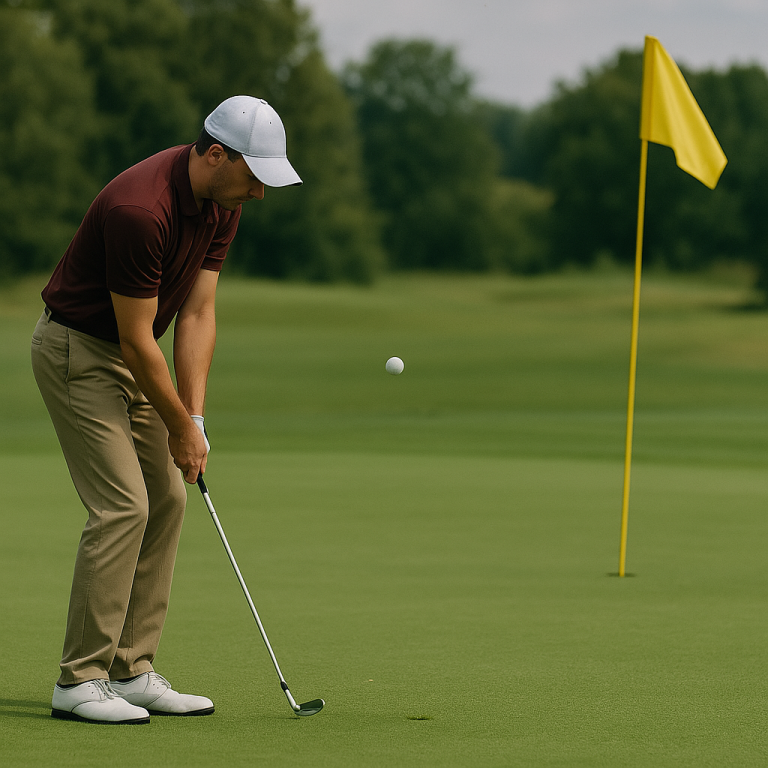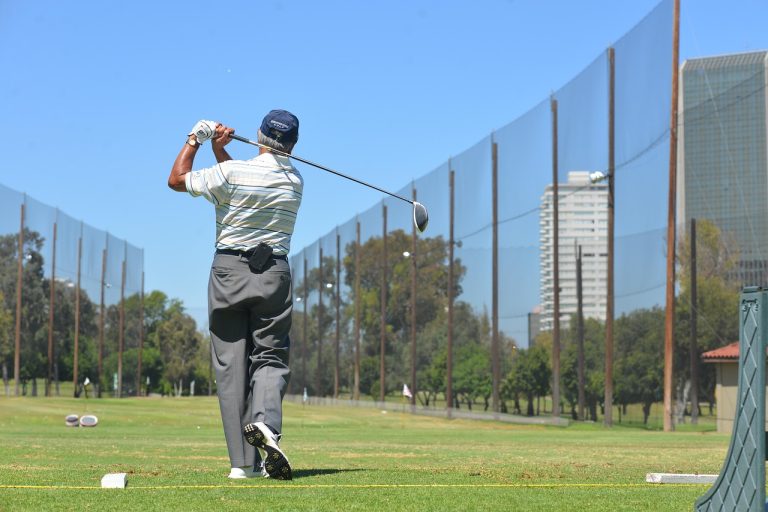Immediate Stroke Cutting Golf Swing Tips
Golfing Troop is reader supported. When you purchase using links on our website, we may earn an affiliate commission. Learn more.
Introduction
Golf is a game of precision, patience, and practice. Whether you’re a weekend warrior or an aspiring pro, mastering your golf swing is essential to lowering your score and enjoying the game. Yet, many golfers struggle with consistency, power, and accuracy, often not realizing that a few minor tweaks can produce significant improvements. In this post, we’ll break down the mechanics of a great swing, highlight common mistakes, and share immediate stroke cutting golf swing tips that can elevate your game from frustrating to fantastic.
With decades of professional insight and real-world success stories, this guide is designed for golfers of all skill levels. If you’ve ever wondered why your swing feels off or how to fix a slice or hook, keep reading. The path to a smoother, more reliable swing begins now.
The Fundamentals of a Great Golf Swing
Every powerful and accurate golf swing starts with solid fundamentals. It’s tempting to skip over the basics in favor of flashy techniques, but true progress lies in mastering the core elements. Here’s what you need to know:
1. The Grip
Your grip is the only connection you have with the club, and a faulty grip can cause chaos. Ensure you’re not gripping too tightly—this creates tension in the arms and restricts a full, fluid motion. Use a neutral grip, allowing both hands to work in harmony. The “V” formed by your thumb and index finger on both hands should point between your chin and right shoulder (for right-handed golfers).
2. Posture and Stance
Start with feet shoulder-width apart, knees slightly flexed, and your back straight but tilted from the hips. Let your arms hang naturally. This athletic posture gives you balance and the ability to rotate freely during the swing.
3. Ball Position
Ball placement changes depending on the club you’re using. For short irons, position the ball in the center of your stance. For mid-irons and hybrids, move it slightly forward. For drivers, it should be aligned with your lead heel.
These core fundamentals may seem simple, but they’re often overlooked. Mastering them forms the base upon which every successful swing is built. Combined with immediate stroke cutting golf swing tips, you’ll find yourself hitting straighter, more consistent shots in no time.
The Backswing: Building Power the Right Way
The backswing sets the stage for your entire swing sequence. Many amateur golfers make the mistake of rushing through it, not realizing it’s where you build your potential energy.
1. Takeaway
The first two feet of your swing are critical. Use a smooth, one-piece takeaway, where the clubhead, hands, and shoulders move together. Avoid hinging the wrists too early or snatching the club back abruptly.
2. Rotation Over Lifting
Think of turning your torso rather than lifting your arms. Proper shoulder rotation loads your power muscles—especially the core and glutes—giving you a coiled-up position at the top.
3. The Top of the Swing
At the top, your lead arm should be straight but not rigid, and the club should point down the target line. Keep your eye on the ball and avoid overswinging—control and balance are far more important than brute force.
Incorporating immediate stroke cutting golf swing tips during your backswing can mean the difference between a powerful drive down the fairway and a weak slice into the rough. A common quick win? Focus on a smooth tempo, with your backswing being slightly slower than your downswing. This helps maintain control and rhythm.
Downswing and Impact: Where the Magic Happens
The downswing is where all the preparation comes together. This is the moment of truth, and it’s where most golfers either shine or falter.
1. Initiate from the Ground Up
Start the downswing by shifting your weight onto your front foot, allowing your hips to rotate before your arms and shoulders follow. This creates a whipping effect that maximizes clubhead speed at impact.
2. Maintain Lag
Lag refers to the angle between your lead arm and the club shaft during the downswing. Holding this angle until just before impact allows for explosive power. Avoid casting the club early, as it results in a loss of speed and control.
3. Strike the Ball, Then the Turf
A good golf shot involves compressing the ball, not scooping it. For irons, your club should contact the ball first, then the ground. This creates that crisp, professional-sounding “thwack” that sends your ball soaring.
One of the most effective immediate stroke cutting golf swing tips at this stage is to focus on your head position. Keep your head still and behind the ball through impact. Lifting your head too early often leads to thin or topped shots—frustrating errors that can easily be avoided.
Follow-Through: Sealing the Deal
While it might seem like the follow-through is just an afterthought, it actually tells you a lot about your swing. A balanced and complete follow-through often means that everything before it was on point.
1. Full Extension
After impact, your arms should naturally extend, with your club traveling down the target line. This shows that you’ve maintained acceleration through the ball.
2. Finish in Balance
You should be able to hold your finish position without falling over. If you’re stumbling or twisting awkwardly, chances are your swing was off balance. A good checkpoint: your chest should be facing the target, and your weight fully on your lead foot.
By paying attention to your follow-through and implementing immediate stroke cutting golf swing tips, you’ll build a more repeatable and efficient swing. Many pros rehearse their finish position during practice—it builds muscle memory and reinforces balance.
Common Swing Faults and How to Fix Them
Even experienced golfers fall into bad habits. Here are a few of the most frequent swing faults and simple fixes using our favorite immediate stroke cutting golf swing tips:
1. The Slice
A slice—when the ball curves dramatically to the right for right-handed golfers—is often caused by an open clubface and an outside-in swing path.
Fix: Strengthen your grip slightly, and practice swinging from the inside out. Use alignment sticks during practice to train the correct path.
2. The Hook
Hooks, which curve too far left, are typically the result of an overly strong grip and a closed clubface at impact.
Fix: Check your grip and ensure you’re not rolling your wrists too early through the ball. Practice swinging with a neutral hand position.
3. Topped Shots
This occurs when the club strikes the top of the ball, often from lifting your head too early or failing to shift weight properly.
Fix: Focus on keeping your head down and staying in posture. Imagine striking through the ball, not at it.
Each of these problems has a corresponding solution rooted in balance, rhythm, and technique. With a few immediate stroke cutting golf swing tips, these flaws can be ironed out on the range and never seen again on the course.
Practice Routines to Ingrain a Better Swing
Improving your golf swing doesn’t happen overnight, but structured practice can yield fast results. Here are some effective routines that work in tandem with our immediate stroke cutting golf swing tips:
1. The 3-Ball Drill
Place three balls in a row. Hit the middle one, then the back one, then the front. This helps with low-point control and consistent contact.
2. Slow Motion Swings
Take ten swings at half speed, focusing on perfect form. Then, gradually increase speed without sacrificing control. This drill enhances awareness and builds muscle memory.
3. Video Review
Use your smartphone to record your swing from the side and behind. Look for issues in posture, takeaway, and follow-through. Compare it to pro swings for a visual reference.
Using drills that integrate immediate stroke cutting golf swing tips gives you a focused practice approach that brings noticeable improvements quickly. Practice doesn’t make perfect—perfect practice does.
Conclusion
The golf swing may seem complex, but at its heart, it’s a repeatable motion built on solid fundamentals, proper sequencing, and balanced mechanics. From grip to finish, each part of the swing plays a crucial role in determining the outcome of your shot. By committing to these essential techniques and integrating our immediate stroke cutting golf swing tips, you’ll not only improve your scores but also rediscover the joy and confidence that come from playing great golf.
So the next time you’re on the driving range or walking up to the first tee, remember: the swing is not just about power—it’s about precision, rhythm, and consistency. With the right mindset and a toolbox full of expert tips, you’re just a few strokes away from the best round of your life.
Happy swinging!







